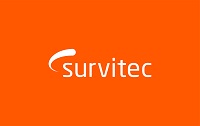SURVITEC HIGHLIGHTS BENEFITS OF CHUTES AND SLIDES IN MASS EVACUATION
Marine lifesaving appliance expert Survitec is responding to the ever-increasing size of cruiseships and passenger numbers through the continuous development of evacuation solutions that utilise both chute and slide access technologies.
According to statistics from CLIA (Cruise Lines International Association) around 30 million people are expected to holiday at sea in 2019, up by nearly 200,000 passengers on the previous year, and nearly 41% more than in 2009. This increase in customer demand, combined with technological advances, has led to larger vessels that are required to evacuate increasing numbers of passenger and crew – designs that present several challenges for safe and rapid evacuation.
Richard McCormick, Technical Sales Director, Survitec, says: “To meet these challenges, Survitec has been developing marine evacuation systems (MES) for the cruise and ferry industries, consisting of chute or slide accessed large capacity liferafts. For example, we have developed an inclined slide solution that draws on advanced technologies pioneered in our defence sector, such as increased pressure systems.”
Over the last 30 years MES have played an increasingly significant part in the passenger ship evacuation equipment mix. Lifeboats have always been required as part of SOLAS but as ship size grows and onboard numbers increase, MES, with their easy launching mechanisms and rapid evacuation, can now be substituted for a percentage of the onboard lifeboat requirement.
MES are easy for crew to launch, reducing the human element required in the passengers’ safe descent. They are also considered an efficient and versatile option as they can be adapted to perform on a broad design of passenger vessels, however, freeboard and beam dictates whether a slide or chute based MES is more appropriate.
McCormick says: “Slides are more instinctive and easier to use for untrained passengers, family groups and the mobility impaired. No one could argue with this.
“Slide technology is, however, specific to low and medium freeboards. This is just geometry, as the higher the freeboard the longer the slide, and the longer the slide the more challenging the performance envelope.”
As an alternative, Survitec has developed the Marin Ark 2 helical slide which combines the benefits of an enclosed evacuation chute with the natural descent of a spiral slide.
McCormick says: “Both slides and chutes are proven methods of evacuation, and it’s a matter of personal opinion which is better. Survitec has customers that prefer slides over chutes and vice versa”.
“Passengers using a chute to evacuate a vessel will experience a controlled fall, as they move though the compartments that lower them to the MES raft below. Height makes little difference to the technology and if the freeboard is high, a chute’s design allows for more modular cells, making them equally suited to evacuation from high buildings,” he says.
However, not all MES chutes are the same, cautions McCormick. “They significantly differ from manufacturer to manufacturer. Differences include design envelope, performance, descent characteristics and evacuee experience,” he says. These differences in manufacturer can present a challenge to broader demographic, McCormick notes that when selecting a chute-based MES, operators must ensure that the lifejackets – which all passengers are required to wear during a ship evacuation – are compatible with the chute and work together as a system.
He says: “The lifejacket should not impact the correct function of the chute, but this can happen if an inferior lifejacket was to come loose, ride up or snag in a chute. All of Survitec’s lifejackets are compatible with its chutes.”
Whether considering a chute or slide based MES, McCormick notes that the optimum time to make these decisions is at the vessel’s design stage.
“Different manufactures have different design envelopes and performance criteria and naval architects should account for these distinctions when working through a ship’s design. Evacuation equipment should not be bolted on as an afterthought but integrated into the overall design of a vessel.”
Looking forward, McCormick believes there will continue to be a market for both chute and slide based evacuation systems as ship design and performance criteria evolve.
Technological advances being made in Survitec evacuation solutions will see the inflatable lifeboat surpass more rigid type approvals and will be the main means of evacuation in coming years.
“Inflatable technology continues to develop and impress,” he says. “Consider the exhaustive and stringent approval tests that new MES are put through, which go way beyond those of a lifeboat. Survitec equipment is subjected to heavy weather tests and wind speeds of Beaufort 6 and waves of a minimum 3m significant height.
“The future advanced evacuation systems will improve vessel safety and evacuation performance. However, with that it will bring a revolution in passenger ship design as future solutions replace inefficient lifeboat and davit arrangements.”
Survitec has produced YouTube videos to highlight the challenges faced in the mass evacuation of passengers. To view the videos, click the links below:

